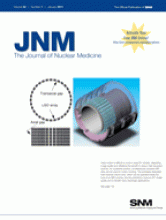Sometimes childhood epilepsy may present with an acute onset of catastrophic seizures, rapidly progressing to intractable status epilepticus with poor outcome. One such example is postencephalitic epilepsy (1), which is a rare epileptic condition and is characterized by different names, such as acute encephalitis with refractory repetitive partial seizures (2), idiopathic catastrophic epileptic encephalopathy (3), devastating epileptic encephalopathy in school-age children (4), or febrile infection-related epilepsy syndrome (5). Postencephalitic epilepsy occurs in previously healthy children after a short febrile illness, followed by acute onset of treatment-resistant seizures that develop into See page 40
status epilepticus. Although there may be several seizure types, such as generalized tonic–clonic or myoclonic seizures, partial seizures are the most common and predominant type, with a characteristic semiology, including eye deviation, hemifacial twitching, and occasional ipsilateral clonic seizures (6). Secondary generalization occurs frequently. The duration of partial seizures is initially brief; however, within a few days they progress rapidly, occurring frequently and ultimately evolving into status epilepticus, which requires barbiturate-induced coma to achieve control. This acute phase evolves into chronic refractory epilepsy without a latent period. Despite extensive investigation, no definite evidence of brain infection or inflammation is found, even in histopathology (7). Mild pleocytosis may be seen in cerebrospinal fluid. Some patients may have antibodies against N-methyl-D-aspartate 2B receptor in serum or cerebrospinal fluid, suggesting possible autoimmunity, and the presence of these antibodies is usually associated with poor cognitive outcome (6). The condition is devastating, is resistant to antiepileptic medication, and results in death or severe neurologic and cognitive impairment, involving language, behavior, and memory. Although neurocognitive impairment suggests extended and widespread cortical dysfunction, most of the neuroimaging studies are noncontributory regarding etiopathogenesis and surprisingly reveal little that can explain the profound neurocognitive disturbances. MRI results are usually normal at onset and may show nonspecific fluid-attenuated inversion recovery signal changes in the hippocampus and amygdala, probably due to persistent status epilepticus, followed by diffuse nonspecific brain atrophy in some patients at later stages.
In an interesting article in this issue of The Journal of Nuclear Medicine, Mazzuca et al. used statistical parametric mapping, an objective voxelwise analytic approach, to identify 18F-FDG PET areas of brain dysfunction in epileptic encephalopathy and evaluated the relevance of the location of these hypometabolic areas relative to the patient's electroencephalography focus and neuropsychologic findings (8). They found a network of cortical dysfunction common to these patients. The hypometabolic network involved symmetrically both associative temporoparietal and orbitofrontal cortices. Correlation with electrophysiologic data and neuropsychologic findings suggested that it included the epileptogenic network and was consistent with major neurocognitive impairments, such as language, memory, and behavior, as the extent of this network was associated with the severity of the cognitive dysfunction. Most frequent associations were observed with uni- and bilateral posterior temporal neocortical hypometabolism and language comprehension, frontal hypometabolism and expressive language, bilateral mesial-temporal hypometabolism and memory, and temporal–orbital–lateral–frontal hypometabolism with mood and behavior.
18F-FDG PET often reveals widespread areas of hypometabolism in cases of chronic epilepsy and epileptic encephalopathy, indicating regions of underlying neuronal dysfunction (9). The extent of such hypometabolism is usually larger than the epileptogenic zone and is thought to represent functional deficit zones. These nonepileptogenic dysfunctional areas are of clinical interest because they often have important neuropsychologic correlates. Combined electroencephalography–functional MRI evaluation has shown that the widespread hypometabolism may result from surrounding and remote inhibition, which might lead to and sustain the neuropsychologic impairment (10). For example, patients with temporal lobe epilepsy often show impairment of verbal and performance intelligence measures when they have additional prefrontal hypometabolism on 18F-FDG PET (11). Prefrontal hypometabolism in patients with medial temporal lobe epilepsy has been reported to be related to prefrontal hypofunction, characterized by poor performance on the Wisconsin Card Sorting test (12). In children with epileptic encephalopathy, Ferrie et al. (13) reported that adaptive behavior showed an inverse correlation with the degree of metabolic abnormality in the frontal lobes. In yet another study in patients with complex partial seizures, depressive symptoms were found to be associated with bilateral reduction of glucose metabolism in the inferior frontal cortex, compared with patients without depressive symptoms and healthy control subjects (14). Further, the presence of medial prefrontal hypometabolism is related to interictal aggression in children with temporal lobe epilepsy (15). Temporal neocortical, particularly posterior parietotemporal, hypometabolism has been found to be associated with language disorder, specifically receptive (16). Similarly, whereas bilateral medial temporal hypometabolism may be indicative of impaired memory, both lateral and medial bilateral temporal hypometabolism may be associated with autistic features, particularly in children with infantile spasms (17). These additional areas of hypometabolism are functional and related to neurocognitive manifestations, as suggested by the fact that complete resection of the epileptogenic temporal lobe can result in recovery of frontal lobe hypometabolism (18,19) and a postsurgical improvement of cognitive or behavioral abnormalities (20–22).
Therefore, the current findings by Mazzuca et al. (8) are consistent with these previous observations and again highlight and reemphasize that 18F-FDG PET can be objectively used to identify and explain the cortical network underlying various neurocognitive dysfunctions. Albeit limited by a small sample size, this study demonstrates the feasibility of an objective approach in the investigation of neurocognitive dysfunctions and should be used and tested in carefully selected larger cohorts with similar or other disorders. An area of caution, though, is the medial temporal lobe (particularly in children), for which, perhaps, visual analysis is better than the voxelwise approach because of the region's smaller size and associated limitations in coregistration and normalization. Besides delineating epileptic networks, the approach suggested by Mazzuca et al. (8) and their findings may encourage and enhance the use of 18F-FDG PET for the evaluation of neurocognitive dysfunction, its evolution, and further prognostication, particularly in devastating conditions such as febrile infection-related epilepsy syndrome, for which there is little explanation for profound and extensive neurocognitive dysfunction.
- © 2011 by Society of Nuclear Medicine
REFERENCES
- Received for publication August 4, 2010.
- Accepted for publication August 11, 2010.







